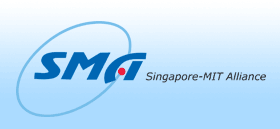Project Abstract:
Metal Injection Molding uses the shaping advantage of injection
molding to mold metallic as well as ceramic parts. The entire process
consists of the following core steps – formation of the feedstock,
injection molding, binder removal and sintering. In feedstock
formation, fine-grained powders are mixed with a thermoplastic
polymer (binder) to form a precise mixture of ingredients that is
pelletized (feedstock). During injection molding, the feedstock is
heated to melt the binder and a part of the desired geometry is
formed. The molded part is known as the green part. The polymeric
binder is then removed through heating by a debinding process.
While retaining its shape and size, the debound or brown part is a
powder skeleton that is very brittle and porous. In the final sintering
processing, the brown part is heated, allowing densification and
shrinking of the powder into a dense solid.
This project seeks to optimize the feedstock mixing process and
the injection molding process with the help of a suitably formulated
design of experiment. Factors that have been identified to influence
the feedstock homogeneity include processing variables and
material variables. Optimization of the mixing process was
conducted by performing homogeneity analysis on the feedstock.
Thermogravimetric Analysis (TGA) was used to determine its
homogeneity. In the injection molding study, injection molding
parameters like temperature and flow rate were studied carefully
to rectify dimensional defects. The main objective was to control
the parameters simultaneously in order to eliminate potential
problems associated with the molding cycle. |


